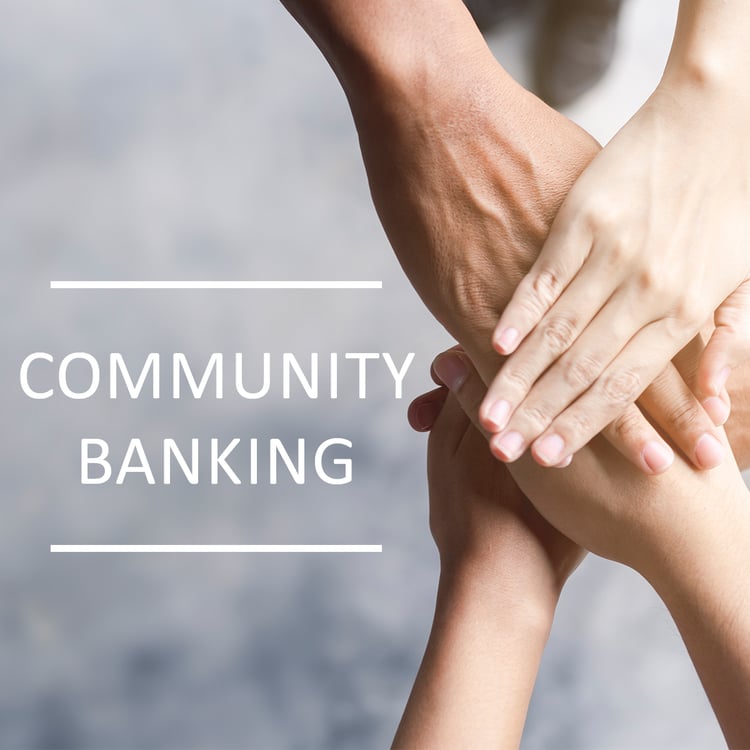
Banking is continually evolving, and lately, I’ve been reading a lot about the need for community banks to embrace digital transformation. How do Community Banks create an omnichannel model while maintaining their hometown appeal? As I was thinking about this question and the growing call for change, it made me reflect on the community bank that was central to the small town where I grew up. This brought back a lot of nostalgia and memories that I wanted to share about my community bank’s role in my life.
I grew up in Damascus, a small town in Montgomery County, Maryland. Our local bank, Damascus Community Bank, opened when I was a sophomore in high school by two pillars in the local community, and it grew very quickly. In a short amount of time, the bank had six locations. It was instrumental in supporting many local businesses, and also offered programs to teach kids about savings and checking. In Damascus, it was the “Cheers” of banking; everyone knew your name. And, of course, lollipops were plentiful!
Although my high school was part of a wealthy county, our athletic facilities were dated, and we were last on the list to have lights installed on our football field. Friday night football games were the social glue of a small town back then. Football games were where everyone would catch up after a long week before going to the bank Saturday morning. Unfortunately for the Damascus community, “Friday Night Lights” didn’t exist because of a funding issue. While the community frequently petitioned the county for assistance, they only offered a portion of the required funding. But when Damascus Community Bank opened, they set a plan in motion to help us raise the money necessary to close the gap so we could finally get lights for our football field and have Friday night games. This commitment to the community is still visible today; the lights are still on every Friday night. This local support was second nature for Damascus Community Bank and allowed them to become fully entrenched and accepted as a vital part of the community.
When I graduated high school, I needed a reliable car to drive back and forth to college. I didn’t have much money saved, so the first place I turned to for help was Damascus Community Bank. I knew the loan officer well; they had helped me open my first checking account. So, when I needed a car loan, they sat down with me to explain how much I could borrow, my monthly payments, and approved me for my first loan, even though I had no credit. At this point, I still hadn’t found a car to buy, but I had the loan to get the process started. Eventually, I found a great Burgundy Chrysler LeBaron, just what every 18-year-old girl dreams of driving. But there was an issue. The down payment I needed was not covered in my approved loan amount. When I went back to the bank, they agreed to issue another loan for half of the down payment. This is the result of having a personal connection with the bank and the employee who worked there.
My experience of purchasing my first car is something I will never forget. It was significant for several reasons. For starters, it was a rite of passage to become an adult; I purchased the car without any help from my parents. But secondly, it was my first experience dealing directly with a financial organization. Damascus Community Bank recognized me as a person, not just an account holder. They extended credit even though I had no history of credit yet. They were willing to take a chance on me. This type of experience doesn’t typically occur outside the community bank structure. Something I came to realize when I started dealing with larger banks.
While attending college, I needed money to cover tuition and living expenses. My job at the local garden mart was seasonal, and it just wasn’t cutting it. I decided to try banking instead, and off I went to apply for a part-time bank teller position at Damascus Community Bank. Because they knew me, I was given my very first job in a professional setting. Through this experience, I realized that I truly enjoyed serving and helping other people. Damascus Bank was the heart of the community, and every week, I would see neighbors and friends when they stopped by to cash a check or make a deposit. The bank impacted me as well as the people it served.
The Damascus Community Bank doesn’t exist today. Like so many community banks, it was acquired by a larger financial institution. When I drive back to visit my hometown, it always feels a little sad not to see the bank sign that had been there for so many years. But time marches on, and through mergers and acquisitions, community banks are being swallowed up; they are no longer the hub of the community. And I can’t help but wonder if other people miss that connection the local bank provided.
There is no question that continual enhancements with current banking technology and omnichannel banking strategies have created more services and options for customers. Change is a necessary part of growth, and today’s banks provide a vast array of services, from opening a bank account to restructuring a mortgage. These offerings provide numerous benefits and advantages. So how does a community bank progress with technology while maintaining their connection with the customers they serve? I still believe that the community bank is a vital business needed in every small town across America.
Do you have a community bank story?
More from the blog
View All Blog PostsSubscribe to Our Blog
Fill out your email address to receive notifications about new blog posts from CC Pace!

